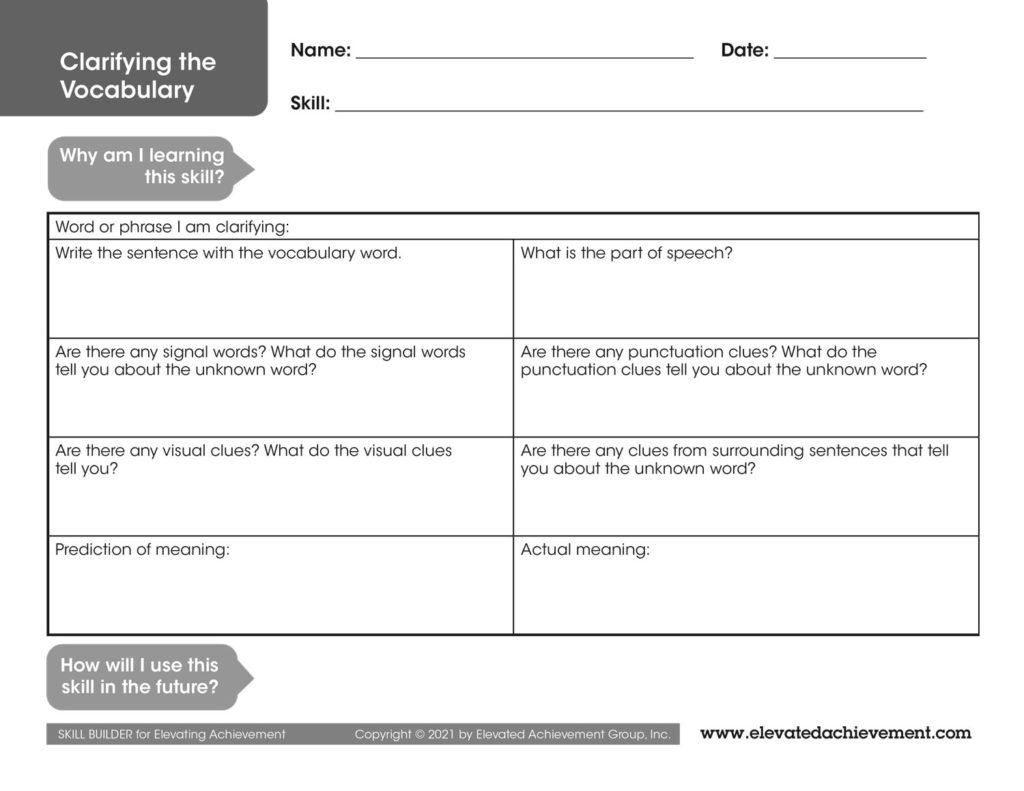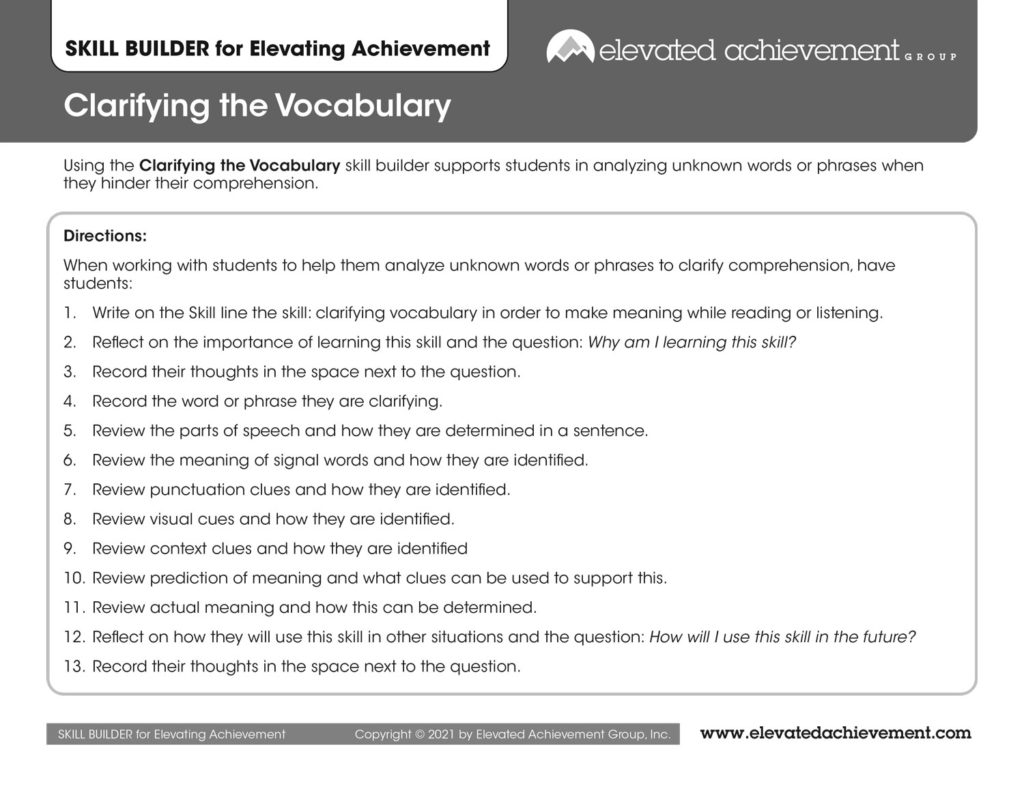Share this article.
Deep learning—of anything—requires strong reading comprehension skills. But deep learning cannot happen if the reader doesn’t understand what they are reading. That’s why one comprehension skill that students must master is the skill of clarifying. Clarifying information helps the reader stay on track as they continue reading.
Research bears this out.
“Clarifying strategies teach struggling readers to do what proficient readers do: They stop reading when a text no longer makes sense and implement various repair strategies. Engaging students in identifying unclear concepts, structures, and passages helps students to learn self-monitoring techniques. Understanding and practicing repair strategies helps students to look for synonyms or other text clues. (LiteracyWork International, 2010)“
What Does It Mean to Be a Clarifier of Text?
For our students to be successful readers they must take ownership of their reading and of the reading comprehension skill of clarifying. But ownership for students needs to be more than just doing the skill—it is recognizing the importance of the thinking behind the clarifying and turning themselves into a clarifier of text.
In other words, students must move from just clarifying to understanding how to use context clues when they are confused to owning the role of clarifier whenever they are accessing information from the text.
 A clarifier thinks like this, “Whenever I read, I need to clarify any words, phrases, or ideas that I don’t understand in the text. I need to stop and think about how the authors is telling me about the information. I ask myself, do I understand each of the words, phrases, or ideas the author is using? If not, I can find out what the author means by using context clues, the glossary, or asking someone. I make sure I know what the author is telling me before I take my notes. Clarifying information helps me stay on track as I continue reading.”
A clarifier thinks like this, “Whenever I read, I need to clarify any words, phrases, or ideas that I don’t understand in the text. I need to stop and think about how the authors is telling me about the information. I ask myself, do I understand each of the words, phrases, or ideas the author is using? If not, I can find out what the author means by using context clues, the glossary, or asking someone. I make sure I know what the author is telling me before I take my notes. Clarifying information helps me stay on track as I continue reading.”
How Can Your Students Become Clarifiers?
Teaching students to become clarifiers can be done in a variety of ways. One way to help students practice the role of clarifier is to use the following graphic organizer as a tool for building this skill.
Here are the directions you can use with your students.
Click here to download this Skill Builder and its directions.
So, Why Develop Clarifiers of Text?
 Comprehension is stronger when students have an opportunity to clarify what they are reading and talk about it. Talking about the reading is stronger when students are able to not only ask questions, but to also clarify ideas, restate the facts, and share what they think they will be reading next. The ability to effectively question, clarify, summarize, and predict is stronger when readers are explicitly taught each of these skills. That’s Reciprocal Teaching, and it is an instructional strategy that not only promotes deep reading, but also student ownership of learning.
Comprehension is stronger when students have an opportunity to clarify what they are reading and talk about it. Talking about the reading is stronger when students are able to not only ask questions, but to also clarify ideas, restate the facts, and share what they think they will be reading next. The ability to effectively question, clarify, summarize, and predict is stronger when readers are explicitly taught each of these skills. That’s Reciprocal Teaching, and it is an instructional strategy that not only promotes deep reading, but also student ownership of learning.
Continue the Learning
Check out these articles and resources to continue your learning about this topic…
The Learning Brief
In this article you learned…
- Why deep learning requires deep reading.
- To ensure accurate reading comprehension, students must move from just clarifying to understanding how to use context clues when they are confused to owning the role of clarifier whenever they are accessing information from the text.
- Clarifying concepts and vocabulary in order to make meaning is a reading skill that can and should be taught.
Can you imagine building an environment full of motivated, engaged, and eager students who own their learning?
We can.



